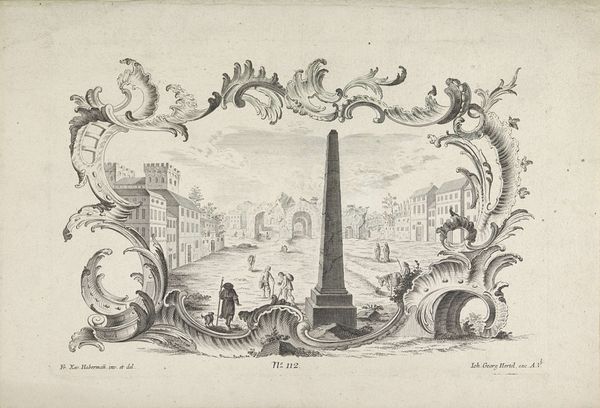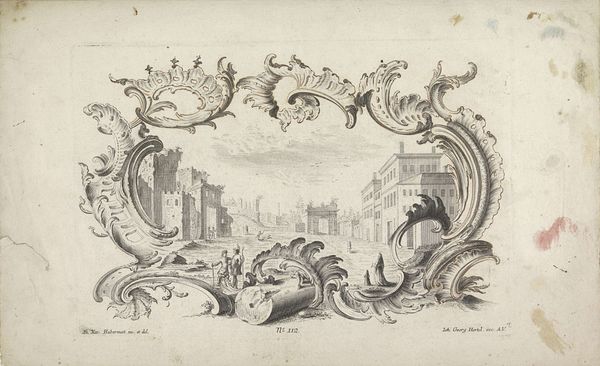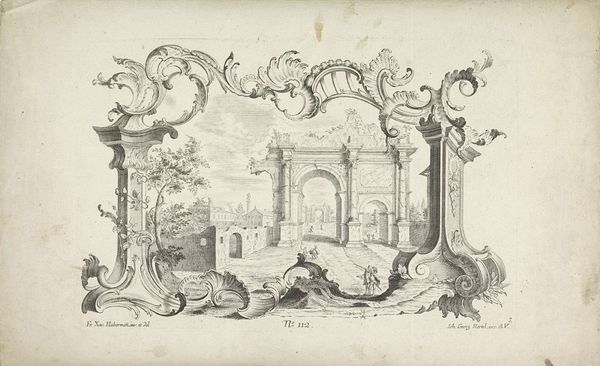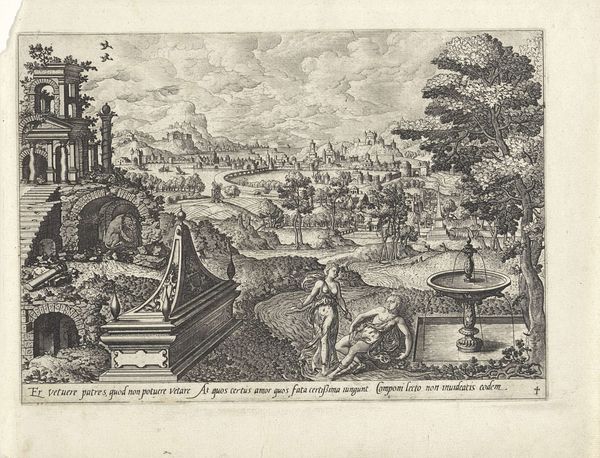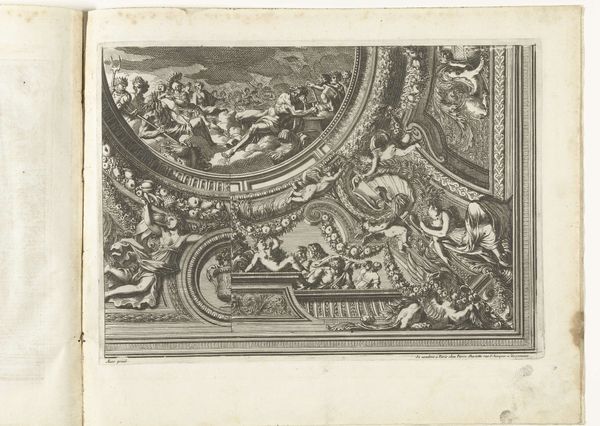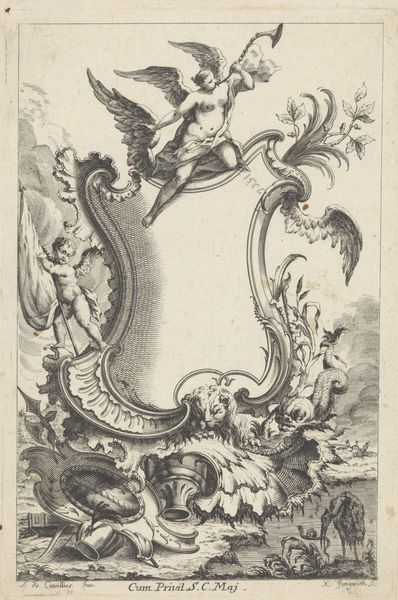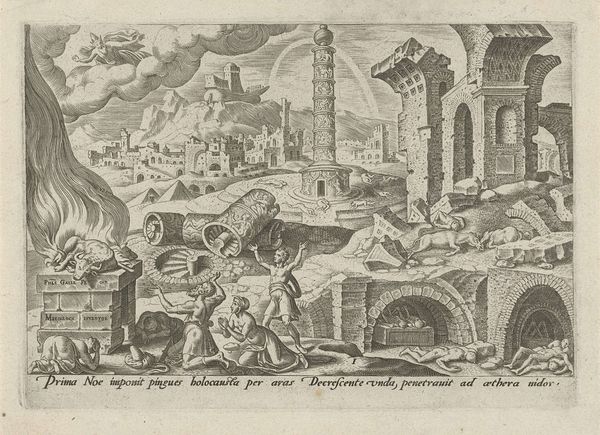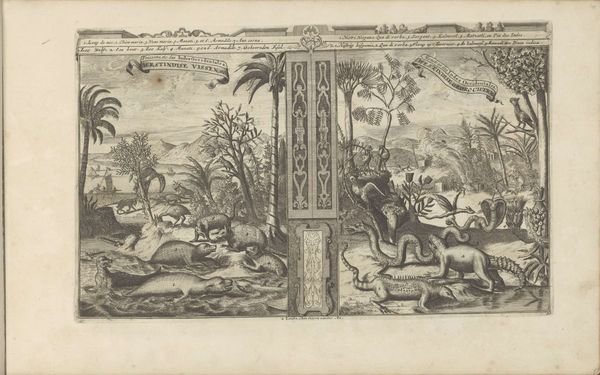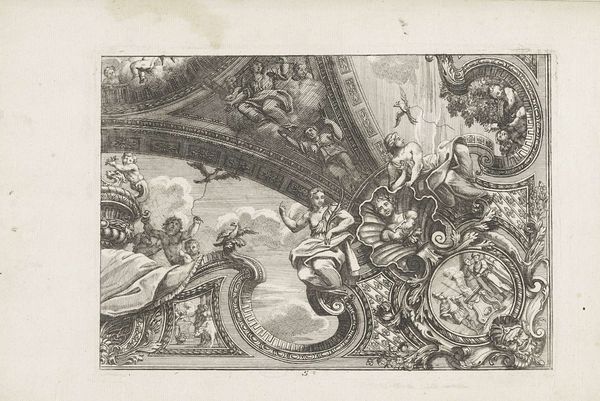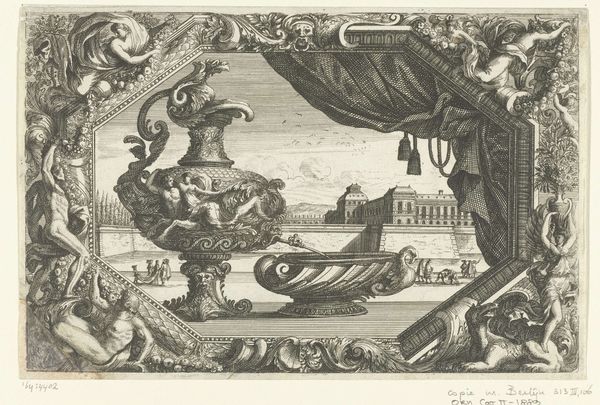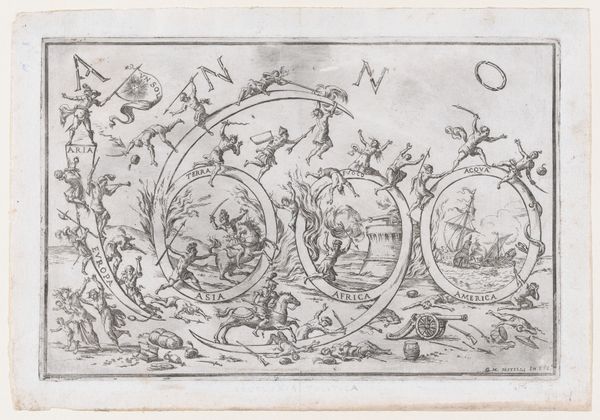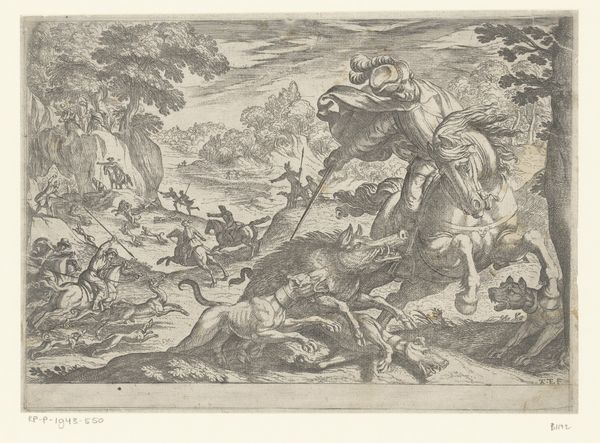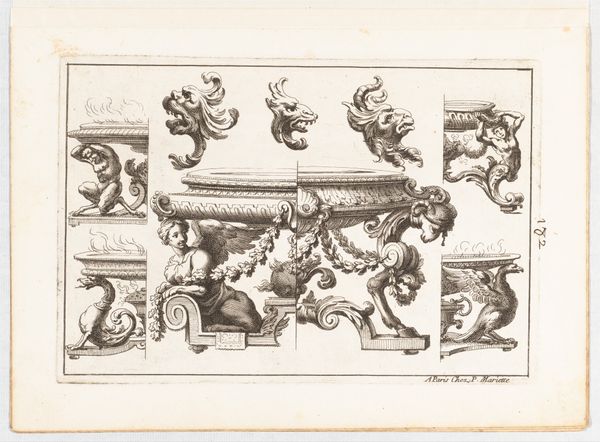
#
light pencil work
#
pen drawing
#
pen sketch
#
old engraving style
#
personal sketchbook
#
pen-ink sketch
#
pen work
#
sketchbook drawing
#
sketchbook art
#
fantasy sketch
Dimensions: height 200 mm, width 300 mm
Copyright: Rijks Museum: Open Domain
Editor: So, this is "Ruïnes in rocaille cartouche" by Emanuel Eichel, created sometime between 1731 and 1775. It’s a pen drawing, almost like a really elaborate doodle. I'm struck by the contrast between the decaying ruins in the center and the opulent, flourishing Rococo frame. What do you see when you look at this piece? Curator: I’m drawn to the material and the making. This isn't just an image; it's evidence of labor. Consider the sheer amount of time spent meticulously hatching those lines, both in the landscape and the cartouche. It’s a commodity, produced in a specific economic context. Who was commissioning these kinds of decorative prints, and what was their purpose? Editor: I guess I hadn't really thought about the economics of it. So, it wasn't necessarily about 'art' in the high art sense we think of today, but more about... production? Curator: Precisely. This bridges "high art" and "craft." The Rococo style, initially associated with elite patronage, became increasingly disseminated through prints like these. Examine how the means of production – pen, ink, paper, printing techniques – democratized this aesthetic. It's no longer just for palace walls. It appears everywhere. Editor: Interesting! The materials used in printing the piece made art accessible. Did it change people's appreciation of original artworks? Curator: That's a great question. Did wider access change value? Think about the cultural shift facilitated by easily reproducible images. What power dynamics were at play in making 'high' art reproducible and consumable by a broader audience? How does mass production change the meaning of the ruin itself? Is it romanticized or exploited? Editor: Wow, I’m going to look at prints very differently from now on. It is no longer just the piece; it is what it represents in the social landscape. Curator: Indeed! Focusing on process opens up a whole new level of appreciation.
Comments
No comments
Be the first to comment and join the conversation on the ultimate creative platform.
